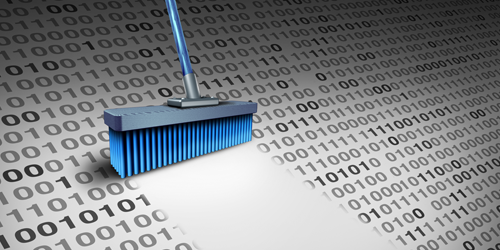If this pandemic has done anything, it has given the gift of time! Time to catch up with old friends, binge watch Netflix shows, and tackle the most mundane projects … like reviewing and cleaning your system data. The thought of cleaning your data may have you desperately seeking other projects, but if your organization is looking to move to the cloud, a pre-implementation data cleansing exercise will save your institution loads of time during migration.
Still doubtful that such an exercise is needed? I encourage you to take a trip down memory lane. Have you seen a turnover of personnel since you implemented your last system and lost the institutional knowledge of how or why data is currently organized? Are you familiar with who owns the data, how clean the data is, and how much needs to migrate? Do you have issues with processing efficiency or reporting where data is likely the culprit? Questions around data and its impact on cloud readiness are common. Reviewing and cleaning your data now will help answer those questions.
However, cleaning data is like re-organizing your great aunt’s basement. Where do you start and how do you know what to keep? The first step is to survey your current situation, such as data structures and processes, to determine where there are opportunities for improvement. For those using PeopleSoft Campus Solutions, I encourage you to work your way down the following common review areas:
- Contact fields (address, email, phone, name types, etc.) – Are all your bio-demographic element types still valid? Do your Address Usage rules make sense and ensure an appropriate type, if populated, will be used?
- Academic fields (organizations, programs, plans) – Are all “active” organization, program, and plan values still active and accepting new applicants? Is your Academic Organization Tree accurate?
- Student groups – Are all group values “active”? Are the students in these groups accurate? Are there new groups that would be helpful to your processing and reporting needs?
- Item type trees – Are all your active item types captured in your tree or do you have too many? Are your charge-like item types grouped to ease defining charge priority? Are your payment-like item types (restrictive FA item types) appropriately flagged and prioritized to pay allowable charges before payments with no restrictions? Are the GL Chartfield strings used accurately?
- Data ownership – Who owns which data and who are the decision-makers with the data? Is data ownership clearly defined and documented?
- Data visioning – Is your data organized to make sense to students, faculty, and administrators? What are the “rules” that determine which operational and financial activity go into which GL bucket (daily student financial transaction of fees, financial aid, other payments, etc.)? How might enrollment activities change with more use of virtual modes of instruction and cross-institutional models of education delivery? Are there current pain points in how your data is organized or captured?
Understanding where there are opportunities for improvement and change is the first hurdle in tackling data cleansing. The next step is to identify what can be improved on now versus what needs to wait for upgrading your system to the cloud. The key is to clean what you can, then understand and document how you want to organize the data in the future. This tedious effort will speak volumes in helping accelerate and inform the data migration activities later.
Still lacking motivation? It is never too late to seek advice and help from an IT partner! Always feel free to contact a Sierra-Cedar subject matter expert.
